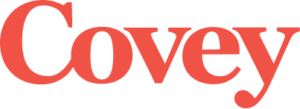What’s next? It’s the question that, as humans, we are always trying to answer. One of life’s most pivotal what’s next moments is the transition from school to adulthood. Although crucial for all students, having a thought-out transition plan is especially important for students with intellectual or developmental disabilities.
What is a transition plan and how do you make one that’s of value to you and your child? In this article, we’ll dive into 5 critical elements of a successful transition plan for students with disabilities.
What is a Transition Plan?
A transition plan is designed to help individuals with intellectual and developmental disabilities adapt to adult life. Transition planning is mandated by the Individuals with Disabilities Education Act (I.D.E.A.) for all students who have an Individualized Education Program (I.E.P.) in K-12 education. The mission of a transition plan is to facilitate a student’s move from school to post-school activities such as living independently, working, and engaging with the greater community.
A successful transition plan is a collaborative effort and must start before your student turns sixteen. It’s based on your student’s strengths, preferences, interests and vision for life beyond high school. We’ve organized and defined the 5 most critical elements of a transition plan.
5 Critical Elements of a Transition Plan
- Education Goals: Does your student plan to attend college or technical school after high school? Defining post-secondary goals is an imperative first step in defining a transition plan. When a student’s post-secondary goals are solidified, choices can be made on what academic areas to emphasize and reinforce during high school, and the transition team can begin researching institutions with the best accommodations for students with intellectual or developmental disabilities.
- Independent Living Goals: It’s important to establish the level of independence desired and achievable for your student once they enter adulthood. At the beginning of your transition plan and throughout, identify age-appropriate, measurable goals. For example, if your student wants to be able to manage their own finances, you might begin teaching them how to use a debit card. If driving a car is an age-appropriate, achievable goal for your student, you will focus on getting them the training they need to be able to safely operate a vehicle. Defining independent living goals for your student will determine how they continue to develop functional skills for work and community living.
- Student-centric: It should go without saying that the successful transition plan will be designed around the individual interests and needs of your student. Besides the fact that this plan will affect your student more than it will affect anyone else, if the plan is built with your student’s interest and input, they will be more likely to stay engaged and motivated toward achieving their goals.
- Self-Advocacy: It’s a common misconception that, if a student has learning disabilities that primarily affect his/her academic performance, their challenges will be alleviated when they leave the academic environment behind. But again—as humans—we are always learning. Learning is about more than grammar and mathematics. Learning is about confidence and self-awareness and continuously improving how we function. Contrary to this unfortunate misconception, studies have shown that many young adults with learning disabilities do encounter difficulties in making the transition from secondary to post-secondary environments. For example, an individual with disabilities may not be equipped to advocate for themselves, which in the professional world, could lead to possible unemployment, unfair wages, and job dissatisfaction. Additionally, individuals with learning disabilities are also at risk of encountering problems related to dependency on others (especially parents), community engagement, and functional skills. To learn more about self-advocacy, check out our blog post: The Three Parts of Self-Advocacy for People with Disabilities.
- Support: Your child’s I.E.P. team is assigned by the U.S. Department of Education. The I.E.P. itself is, as defined by this article in Very Well Family, “I.E.P. is a legally binding document that spells out exactly what special education services your child will receive and why.” After a referral from an education professional—quite possibly a teacher, guidance counselor, or principal from your child’s school—your child will undergo an assessment to determine a need for an I.E.P..Your Student’s I.E.P. Team is Composed of:
- You (the parents)
- One regular education teacher
- One special education teacher
- A representative of the local education agency (L.E.A.)
- An individual with special expertise in regards to the student
These individuals work together to assess your student’s needs, progress, and plans for the future—including developing a successful transition plan.
Covey Provides Compassionate Support
A transition plan isn’t just for your child. It’s for you, too. As your child’s primary caregiver, you’ve gotten used to their routine, to ensuring they’re comfortable, happy, and that their quality of life is as high as it can be. To learn more about how you can prepare yourself and your child for a healthy transition, check out our blog post Transition Planning: A Parents’ Guide to Letting Go.
Preparing your child for their adult life is no small challenge. When you need support beyond what your family or I.E.P. can provide, Covey is here to help. Our respite care houses in Oshkosh and Appleton each offer a safe, secure, and inclusive environment where individuals develop social and independent living skills. And through our exciting Community Engagement program, individuals are encouraged to positively interact with the community. We volunteer, connect with local businesses, and more.
To enroll in our Respite Care program, Community Engagement program, or any of our virtual or in-person events, contact us at info@covey.org.

